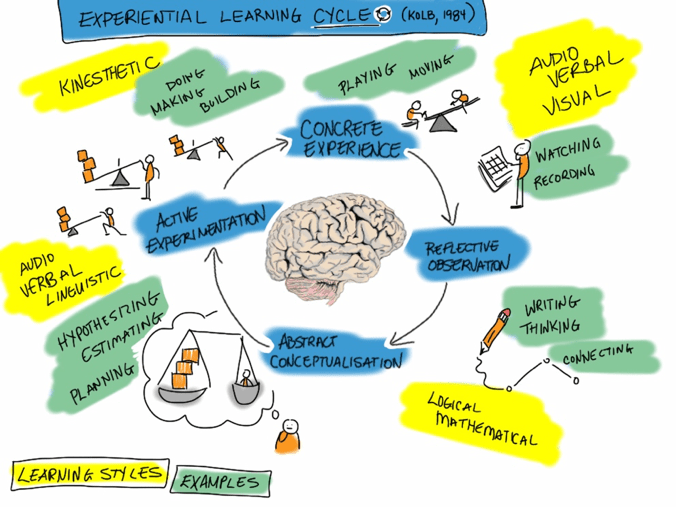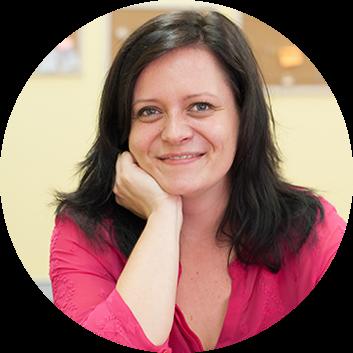Experiential Learning: Breaking Down the Learning Cycle
Experiential learning broken down into four cyclical stages, with a bonus teaching tip for each stage.
Editor’s Note: This is a guest post from Katarina Chmolova. Katarina is an Instructional Designer at OpenLearning. She has a Masters and PaedDr Degree in Education, with a research focus on developing school, family and community partnerships. She believes learning is a means to achieving people’s life dreams, potential and ambition.
“For the things we have to learn before we can do them, we learn by doing them.” — Aristotle, in Nichomachean Ethics
Let’s say you want to get a driving license. You study all the traffic rules and try to remember all the traffic signs. What’s missing is the practice, or your own experience. Once you have the know-how AND the experience, you are ready to hit the roads with the licence in your pocket.
Learning happens in so many different ways. Just like getting your driving licence, an effective learning process involves motivation, information, reflection, thinking, experimenting, and putting new ideas and concepts into practice. This is referred to as “experiential learning.”
One of the models of experiential learning was created and presented by David Kolb, an American educational theorist. The model emphasizes the importance of the following:
- students’ motivation to learn,
- students being actively involved in their own learning,
- students’ ability to reflect on the experience,
- students using analytical skills to conceptualize the experience,
- students using decision-making skills, and
- students using their problem solving skills.
The four stages of Kolb’s experiential learning cycle are shown below.

Let’s have a closer look at each phase of Kolb’s Learning Cycle.
Phase 1: Concrete Experience — Feeling
The first stage is represented by the learner’s concrete experience. At this stage, students learn intuitively and according to what they felt when they experienced any random or complex situation. Positive feelings are directly linked to motivation for further learning.
For example, imagine you’re travelling for a holiday and your destination is Costa Rica. You probably don’t have a lot of knowledge before you visit this beautiful country. During your holiday, you learn about people, or new words. You learn about their traditions, history, monuments, and much more. This learning was based on your concrete experience, and learning was very natural and not intentional.
Teaching Tip: You can design experiences which have a high learning potential: e.g., internships, field trips, and networking opportunities; and visiting museums, galleries, exhibitions, etc.
Phase 2: Reflective Observation — Watching
The second stage focuses on watching or observing the new situation. This involves evaluating, searching, and analyzing connections. Students begin to expand their perspective and develop different points of view, drawing new meanings from experiences.
For example, you learned a lot of new things during your holiday! Now, you try to link it with your current knowledge, and so you look at things from different angles. Your new experience had a huge influence on the way you “see things.”
Teaching Tip: At this stage, you can help your students reflect on their experience. Ask them questions, and challenge their minds. Go beyond asking them to share and recount what they did: challenge them to think deeply and link to other concepts, and so on. Be sensitive to hints — if your student is excited while speaking about food markets, use questions rather than hints to let students discover what was so exciting about the food markets and how the idea can be innovated.
Phase 3: Abstract Conceptualisation — Thinking
At this stage students think about their experience and the situation. They fit new information into existing concepts. They then go on to create new concepts and ideas, or modify the existing concepts.
For example, during your holiday you experienced a different cultural approach towards work. You observed that people do not just have a one hour lunch break, but instead they take a siesta, which takes 2–3 hours due to heat. Exciting, right? Your existing concept of one hour lunch breaks is challenged by your new experience. You think about the concept and you think about how you can modify the existing concept, or you want to create a new concept within your own culture or environment.
Teaching Tip: This stage is crucial — encourage your student to think, to create new ideas, and to come up with creative, unusual, or original ideas! Your student might feel really shy or “stupid” to even talk about these ideas. Your support can make a huge difference, and might even lead your student to win a Nobel Prize one day. Who knows?
Phase 4: Active Experimentation — Doing
The final phase is much more than learning by doing. Students do not only influence other people or change the situation, they also apply new knowledge or skills in a new environment. Students use the theory of an existing concept AND they actively apply the concept. In other words, based on concrete experience, thinking, and doing, they are able to create new concepts.
In the final stage of your learning cycle, you actively experiment with the new concept of the 2–3 hour siesta. You search for ways to influence people around you; to experiment with the new concept; to create the concept that will be suitable in your own environment; and, most importantly, you experiment and implement it.
Teaching Tip: At the final stage, again, support your student, ask questions, and encourage them to actively apply their knowledge. Assure your student that failing is a necessary part of creating and creativity. Your student can feel really exhausted when all their effort is not working! Your role is to tell them: “You’re on the right track, keep trying.”
You can see that an unintentional experience can lead to a completely new understanding, or concept, of lunch breaks in your own company!
As a teacher, you have all the resources to create an awesome online course and extraordinary learning experiences! Use all the resources: not just Google, or libraries, but also reach out to inspirational teachers around you. Don’t be afraid to create your own resources to build a course your students will never forget and will not want to finish!
OpenLearning is a social online learning platform governed by pedagogical beliefs in student empowerment, active learning experiences, and community. These beliefs are deeply rooted within the platform design and expressed through regular blog contributions.






